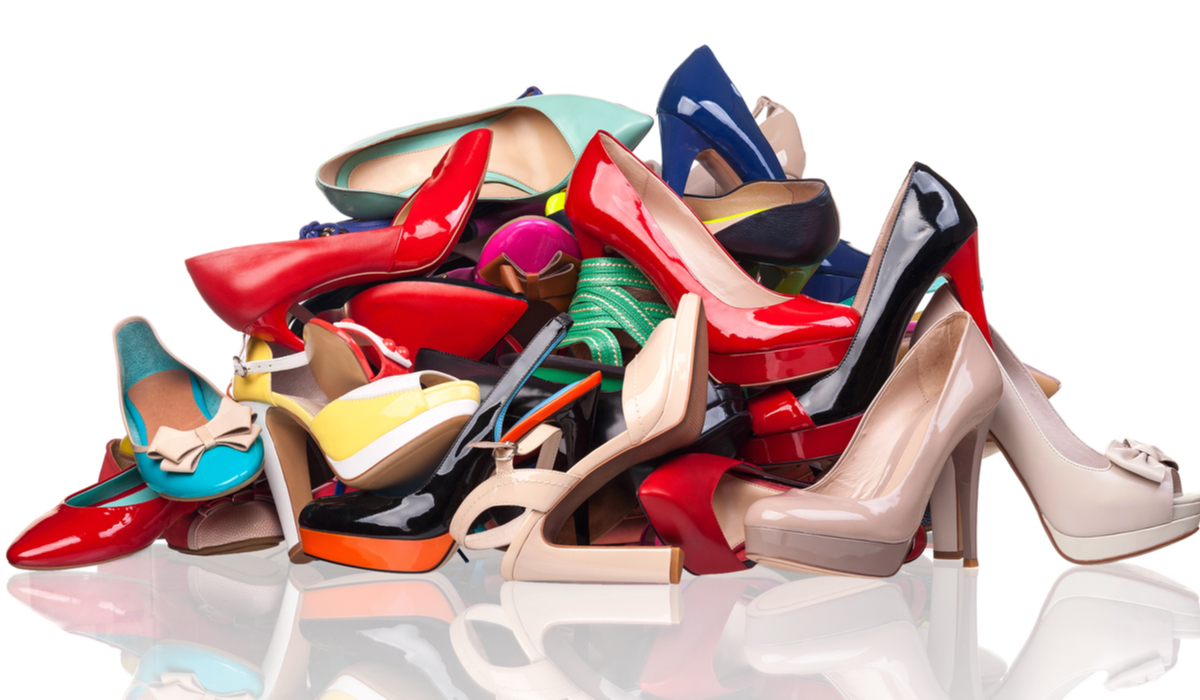Shoes are maybe the most important part of our wardrobe. They have the unbridled effect of really pulling together an outfit. Everyone has a favorite pair, and there’s a whole culture built around self-proclaimed “sneakerheads.” Heck, even Andy Dufrane wanted a pair of spiffy kicks when he waltzed out of Shawshank prison.
But one pair of shoes begets a second, and a second begets a third, and before you know it, you are left under a shoe mountain with no way out. You’ve missed weddings, parties, and quinceaneras all because you couldn’t crawl out from beneath your shoe-tastrophe.
Well, we’re glad you stopped by our blog to find out how to organize your many beautiful and important footwear options. We love to help you organize, so you have come to the right place! Read on for all our shoe organizer ideas!
A Shoe Story
Or, a Foot Fable! Either way, the history of shoes and the science behind them is as endlessly fascinating as the number of shoes in your closet. You probably have many different shoes for many different occasions like running, hiking, dancing, going out, playing sports, etc. The reason for all the different types of shoes is largely due to the complexity of the human foot.
The human foot consists of 26 bones, 33 joints, plus a complex network of muscles, tendons, ligaments, blood vessels, nerves, skin, and other soft tissue (including an area affectionately known as your “fat pad”). All of this creates a complex and flexible structure that provides us with support, balance, and of course, mobility.
With all this in mind, it is surprising that anyone can find a shoe that fits and fits well. Not to mention everyone has slightly different feet! There are flat feet, high-arched feet, long feet, short feet, narrow, wide, and so on and so forth. It’s hard to imagine a time when sneakers and shoes weren’t as versatile as they are today, but it wasn’t all that long ago that shoes were more utilitarian.
By the beginning of World War II, the height of heels was limited to less than an inch in the United States and a quarter of an inch in Britain. This was due to the short supply of leather, so cheaper, poor-quality leather was used.
After the war, restrictions were lifted, and heels went higher, toes came out, and, as leather became too expensive, plastic and synthetic fibers emerged as the common material for footwear.
Styles have since ebbed and flowed through the years. Platform shoes gave way to low-ride sneakers, and sneakers became fashion statements in their own right as Jordan’s took over the market.
Whatever the style or use, you are likely to have several pairs lying around the house right now. So, if your cluttered closet is driving you mad, it’s time to organize and get your shoe collection straightened up with our organizer ideas!

Shoe’s There?
The first step to a more organized shoe collection is to declutter your excess shoes. Gather up all the shoes lying around the house, whether they are by the door or under the bed, and bring them into one area where you can see them all and assess your shoe situation.
Start to declutter them by deciding what can stay and what should go. You will want to make sure you have a shoe for every category, including athletic, work, casual, evening, or dress shoes, and weather-related options like boots and sandals for the beach.
Get rid of duplicates and shoes you haven’t worn in the last year or so. If you really think you might need them for whatever insane reason you convince yourself of, throw them in a box and put them in storage just in case.
It’s also good to have a pair of junk shoes you throw on when cutting the grass or doing yard work that can get dirty. Keep these in your mudroom or in the basement if you can.
Once you have tossed the shoes that are no longer in your rotation, it is time to begin organizing them.
Let My Shoes Open the Door…
…To your heart!
Shoes have a natural tendency to pile up in front of your entryway or in your mudroom, and who can blame you for kicking off your shoes when you walk in so you don’t track the outside dirt and germs all over your clean home?
The problem with this habit is that the shoes can quickly pile up and cause a pile of tangled laces and errant shoes that can even cause people to physically trip when they enter or exit your home. Not to mention how difficult it can be to find the pair you want when they are buried in a mess of Nikes and Sperry’s.
A good way to avoid the dangerous eyesore that is “door shoes” is to create a designated storage spot for them. If you have a family, you can also set rules about how many pairs of shoes they are allowed to keep there. Daily shoes, like sneakers or boots, are often kept near the door for ease, but try to keep the high heels and workout shoes in one of the other locations we will cover in this post.
Baskets or cubbies are good options for keeping the doorway clear of shoes. Designate a cubby for each family member if you have space. If this isn’t a feasible option, try a hanging or over-the-door shoe organizer in the entryway closet. Boot trays are also a good option to designate a spot near the door for shoes and boots.
DiSHELVEd
Shelves are the natural home for your shoes. It is what you probably picked them off of when you saw them at the store. If you have the tools or the closet space, or both, a shelving unit can really upgrade your shoe organization.
You can find DIY videos online for building shelving units in your closet or near your doorway, or you can buy shoe shelves and save some time. If you go this route, it is recommended to organize by occasion and color.
Start with placing flip flops, sandals, and open-toed shoes at the top, and then work down the shelf to your heels and boots toward the bottom. You should always store your shoes head to toe when possible. This will allow for more shoes to fit on the shelf.
Cubbies are a close relative of the shelf. You probably recall them from preschool, where you would throw your backpack before playtime, but they can also be a great place to store your favorite footwear.
Cubbies are sturdier than shelves and tend to have a nicer look as well, but they also cost more and take up more space. Cubbies can keep your shoes mated and separated more easily than shelves, so consider this when making a decision about which to use. Additionally, if you have lots of large pairs of shoes or men’s shoes, they can be a tight fit in cubbies, making shelves a better option.
Over-the-Door and Through The Woods
An over-the-door storage unit can be a lifesaver if you have more shoes than you can handle. These are great options if closet real estate is at a premium. It’s recommended that you store lightweight and compact shoes in these since larger footwear may fall out when the door is shut.
Over-the-door units can be linen or fabric, or clear plastic. Linen tends to look nicer, though, if you care about making a statement. Most units can hold 20-36 pairs of shoes, making this one of the most effective methods of shoe organization.
No Room for Monsters Under the Bed
Kick the monster out under your bed because an under-the-bed storage unit is a fantastic solution for organizing your shoes. These bins or compartments are slim enough to fit under the bed and have compartments for multiple pairs of shoes. You can fit upwards of 12 additional pairs of shoes in these units and easily store them under your bed or on the floor of your closet.
It is probably best to keep out-of-season shoes in these bins if you decide to store them under the bed since getting them out may be a hassle on your back or knees.
These Boots Are Made for Storage
And that’s just what you’ll do! Boots pose a unique challenge because of their size and shape. Many of the storage options listed already cannot accommodate boots.
You may want to consider a boot rack, which will hold them upside down, a boot hanger, or possibly a boot stand. The key is to make sure the boots do not bend over. You can also get boot cushions to store inside boots to keep them upright if needed.
Mission Organized: Accomplished
If you follow these steps, your shoe collection should be looking like it’s a retail display! Check out Bulbhead for more cleaning and storage tips, tricks, and products!
